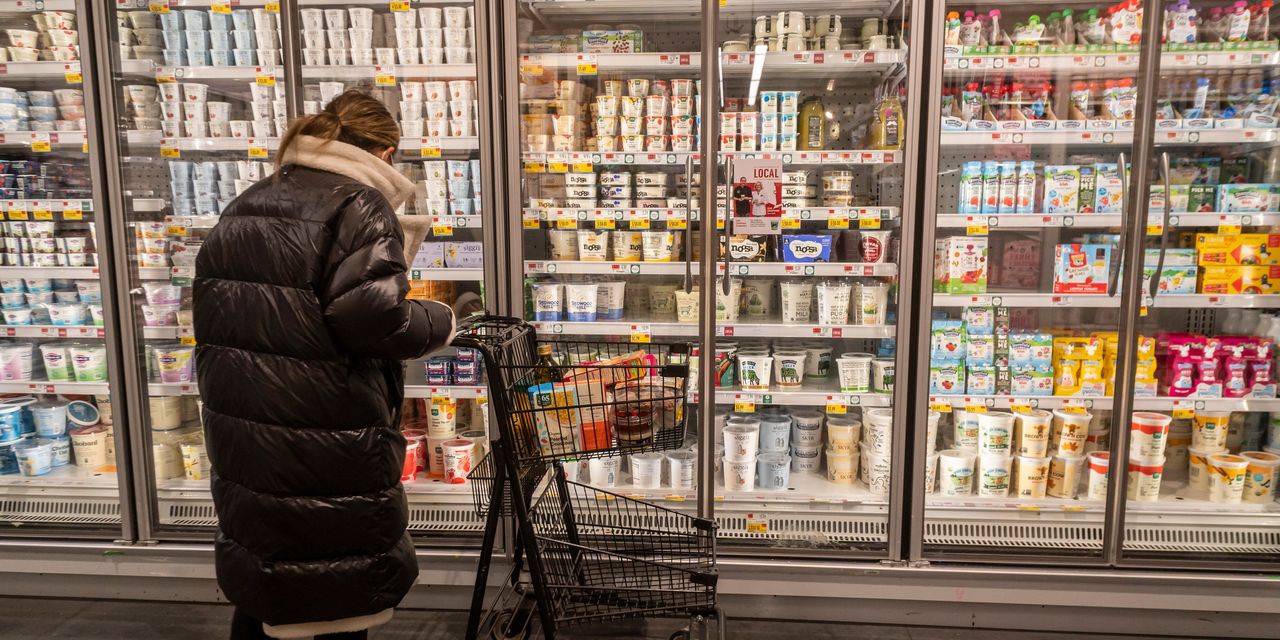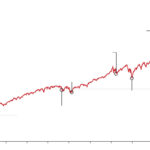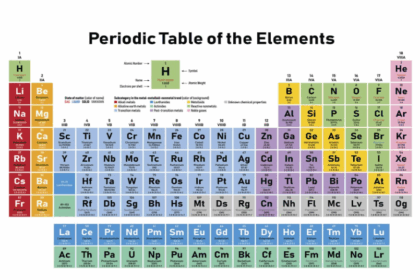
Rising inflation and the spread of the Omicron variant dented household spending, a key engine of economic growth, headed into 2022.
Consumer outlays declined by 0.6% in December from the prior month, the first decrease since last winter, the Commerce Department said Friday.
Meanwhile, prices continued to climb. The Commerce Department’s personal-consumption-expenditures index measure of core inflation, which excludes volatile food and energy costs and is closely watched by the Federal Reserve, rose 4.9% from a year earlier. That marked the fastest year-over-year increase since September 1983.
SHARE YOUR THOUGHTS
How have inflation fears affected your spending habits? Join the conversation below.
“Certainly it is a weak handoff from consumers going into the first quarter,” said Kathy Bostjancic, an economist at Oxford Economics. The spread of the Omicron variant, higher prices and supply-chain issues prompted consumers to start their holiday shopping earlier this year, she said, which also hurt spending in December.
The easing of consumer spending comes despite strength in other areas of the economy. The unemployment rate was a low 3.9% in December and workers’ wages grew, while U.S. gross domestic product increased at a strong 6.9% annual rate in the final quarter of 2021, as consumers front-loaded holiday spending and businesses restocked shelves after months of pandemic-related disruptions.
Friday’s report showed households’ incomes rose 0.3% in December, but the increase didn’t keep pace with rising inflation. Overall inflation, as measured by the PCE index, rose 0.4% for the month and 5.8% from a year earlier.
Adjusted for inflation, after-tax personal income declined 0.2% from November. It has decreased for five straight months and in eight of the last nine months, leaving households worse off.
Services spending rose 0.5% in December, primarily due to increased spending on healthcare as the Omicron variant spread. Goods spending fell 2.6% in December amid supply-chain bottlenecks and consumers starting their holiday shopping earlier.
There are broad signs that consumers pulled back in January. Spending at restaurants, airlines and on travel bookings has cooled since late November, according to card transaction data from research firm Facteus, and it has been in decline this month at home-supply stores and wholesale clubs.
Economists largely forecast growth will be weak in the first quarter of this year, but they predict consumer spending will rebound once the current Omicron wave of Covid-19 infections tapers off.
Still, strong growth and low joblessness are helping to drive inflation, and higher prices threaten to squeeze consumers and businesses in the months ahead, along with expected higher interest rates from the Federal Reserve.
Sydney Zimmermann, of Erie, Pa., is feeling the pinch from higher grocery costs, particularly for items such as fresh produce.
“It’s disheartening to think that strawberries, avocado and bananas are increasing in price,” she said, adding that she thinks healthy eating is especially important in a pandemic.
The 29-year-old has also noticed that prices have risen at local restaurants, and eateries that used to be closed only on Sundays now tend to be closed on Mondays and Tuesdays as well because of worker shortages, “so you have less options.”
One bright spot for consumers is that supply-chain bottlenecks and product shortages caused by a rebound in demand after Covid-related shutdowns appear to be easing. In the fourth quarter, inventory investment made up the lion’s share of GDP growth, as businesses replenished shelves and supplies. That will mean more items on shelves for consumers to purchase this winter, which economists hope will help cool rising inflation.
Kohli Flick, owner of home goods store Becket Hitch in Lutherville, Md., a suburb of Baltimore, said supply-chain issues in the broader economy actually benefited her business this holiday season, as online shipping delays and out-of-stock notices sent shoppers to her bricks-and-mortar store for gifts.
Ms. Flick said she is optimistic. “I feel like it’s going to be a good year,” she said. “I think we’re kind of at a point where obviously the world as we knew it pre-2020 isn’t returning any time soon. We have to figure out how to live in the new normal.”
Write to Harriet Torry at [email protected]
Copyright ©2022 Dow Jones & Company, Inc. All Rights Reserved. 87990cbe856818d5eddac44c7b1cdeb8








